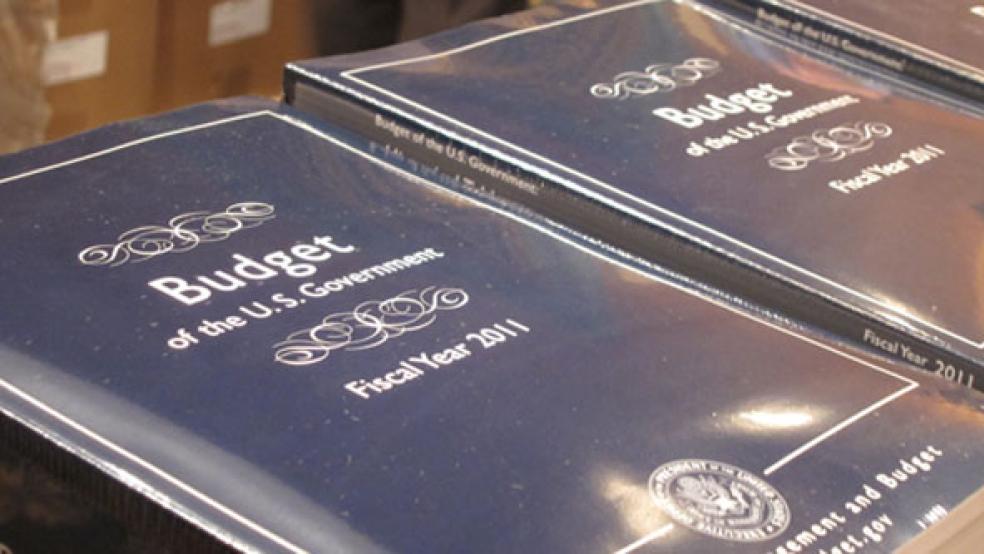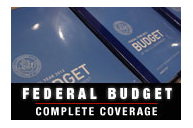The federal government completed fiscal 2013 with a shortfall of $680 billion – a startling turnabout after four consecutive years of trillion dollar deficits and the worst economic conditions since the Great Depression.
The final 2013 deficit fell $409 billion below the 2012 shortfall and $293 billion less than was forecast in President Obama’s April budget, according to administration figures released on Wednesday. The number barely missed the CBO projection of $642 billion.
As a percent of Gross Domestic Product (GDP), the deficit fell to 4.1 percent, representing a reduction of more than half from the deficit that the Obama administration inherited in 2009 when Obama began his first term.
RELATED: A BUDGET DEAL THAT DID REDUCE THE DEFICIT
The deficit reduction since that point represents the fastest decline in the deficit over a sustained period since the end of World War II, according to the administration.
While the steep drop in the budget deficit had been anticipated for months – amid the economic recovery and congressional belt tightening -- the final numbers released by the Office of Management and Budget and the Treasury Department inevitably will become grist for the debate on Capitol Hill over spending and tax priorities for the coming year.
At the first meeting of a bipartisan House-Senate conference committee yesterday, Democrats and Republicans outlined stark differences in their fiscal outlooks as they seek compromise on a budget blue print to guide the government through the next eleven month and avoid another budget crisis or government shutdown.
Senate Budget Committee Chairwoman Patty Murray (D-WA) is promoting an expansive spending agenda – fueled by nearly $1 trillion in additional taxes over the coming decade—to spur economic growth and help struggling middle class families.
Rep. Paul Ryan (R-WI), her counterpart in the House, is pressing for even tighter spending measures to control the long-term deficit and debt as more and more baby boomers retire.
RELATED: WHY REPUBLICANS REALLY LOVE BUDGET DEFICITS
“Ten thousand baby-boomers are retiring every day,” Ryan said. “Health-care costs are rising. Medicare and Social Security are going broke. The Congressional Budget Office says if we don’t act, we’ll have a debt crisis. And if that happens, the most vulnerable will suffer first and worst. This debt weighs down our economy even today. But right now, we’re not doing much about it. We can’t kick the can down the road anymore. We’ve got to get a handle on our debt—now.”
For Murray’s part, the sequester that has forced automatic cuts in defense and domestic programs for much of the past year must be replaced with a more sensible approach that includes near-term stimulus spending to keep the economy moving.
“Sequestration is bad policy—and Democrats and Republicans have said it’s not sustainable—but it is going to continue to cost us jobs and cut vital services until we get a bipartisan deal to replace it that is fair for seniors and the middle class,” she said.
White House budget director Sylvia Mathews Burwell said in a statement accompanying the new deficit figure that Obama “believes that growing our economy and creating more good jobs with higher wages must be our top economic priority.”
“That is why he has consistently advocated a strategy to strengthen the middle class while improving our nation’s long-term fiscal position by cutting the deficit in a balanced way,” she said. “Under the President's leadership, we have already locked in more than $2.5 trillion of deficit reduction over the next decade, through a combination of spending cuts and revenue increases from asking the wealthiest to pay their share.”
RELATED: 5 EXPERTS EXPLAIN HOW TO SOLVE THE BUDGET DEFICIT
The significant decrease in the deficit from last year was due to a combination of higher receipts and lower outlays in 2013, which can be attributed to a variety of factors, such as a stronger economy, the expiration of certain tax cuts for high income Americans, and spending reductions like those achieved from the troop drawdown in Afghanistan.
The Congressional Budget Office reported in September that the deficit had shrunk to its smallest size since 2008 from a peak of almost 10 percent of GDP in 2009. And absent some significant change in policies, the deficit will continue to drop over the next few years, falling to 2 percent of GDP by 2015.
Beyond that, the deficit will begin to rise again – due in large measure to increasing interest costs on the debt and growing spending for Social Security and the government’s major health care programs.
Concern about the deficit and the $17 trillion national debt were front and center yesterday as lawmakers began negotiating a budget deal ahead of a Dec. 13 deadline.
"I’ve started to hear talk that we don’t have a debt crisis anymore, and that we are well on our way to climbing out of the problem that we face,” said Sen. Mike Crapo (R-ID). “But we do still face a crisis.” If Congress sticks to the sequester he said, “We are going to be spending less in real dollars in this fiscal year than we have in years past – a remarkable achievement that must be maintained.”
Rep Tom Price (R-GA), Vice Chair of House Budget Committee, insisted that “We're on a completely unsustainable [debt] path that threatens the security and prosperity of our nation.”
Democrats sharply disagreed, arguing that Congress and the administration already have done an adequate job of reining in spending. “Over the last few years we have cut the deficit by $2.7 trillion, excluding the sequester,” said Rep. Chris Van Hollen of Maryland, the ranking Democrat on the House Budget Committee. “Three quarters come from budget cuts, one quarter comes from revenue. The ratio of cuts to revenue is more than four to one.”
“We should still do more,” he acknowledged. “But there are dramatic differences between our budget [and that of the GOP] as to how we tackle the challenges.”
The Fiscal Times’ Brianna Ehley contributed to this article.






